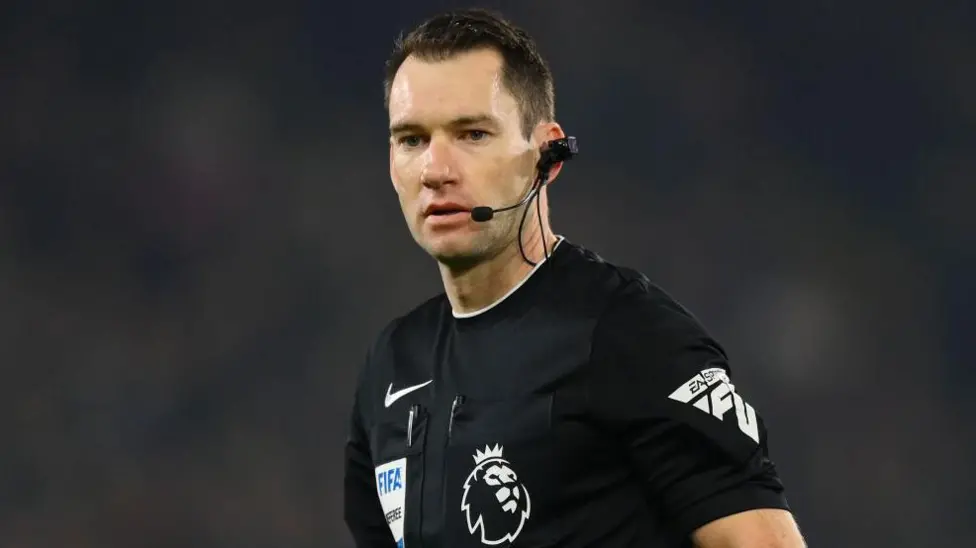
The View From the Whistle: Referees to Wear Bodycams at Club World Cup for the First Time
Referees to Wear Bodycams at Club World Cup — A Bold Step Toward Transparency in Football
Referees to wear bodycams at Club World Cup—that’s the headline making waves across the football world. It’s a move that has been on the cards for a while, but now it’s official. When the 32-team Club World Cup kicks off this summer in the United States, the men in the middle will have more than just a whistle and cards at their disposal—they’ll be wearing bodycams.
FIFA has confirmed that footage from these body-worn cameras will be made available to broadcasters during matches, providing fans with an entirely new perspective. It’s not just about officiating—it’s about storytelling, access, and maybe even a little bit of accountability.
Let’s unpack what this bold new direction means, why it’s happening now, and how it could shape the future of football.
A Closer Look at the Decision: Why Referees Will Wear Bodycams at the Club World Cup
For years, referees have operated under an increasingly intense spotlight. Every call is dissected, every movement scrutinized. With the rise of VAR, fans have grown used to seeing decisions reviewed, but the idea of seeing the match from a referee’s actual point of view? That’s something else entirely.
Pierluigi Collina, chairman of FIFA’s referees committee and one of the most respected voices in world officiating, put it succinctly:
“It is a good chance to offer the viewers a new experience, in terms of images taken from a perspective, from an angle of vision which was never offered before.”
It’s not just about adding another camera angle—it’s about immersing viewers in the game in a way they’ve never seen. What does it really look like to judge a foul in real time? What kind of verbal exchanges go on between players and officials? And how does a referee navigate a pressure-cooker atmosphere in the final minutes of a knockout match?
With bodycams, fans won’t just hear about the chaos—they’ll be right in the middle of it.
From Grassroots to Global Stage: The Evolution of Referee Bodycams
The idea of referees wearing bodycams didn’t just appear out of nowhere. It’s the product of years of experimentation and quiet success stories in other parts of the footballing pyramid.
In fact, the first formal trials came not in the glamorous stadiums of Europe, but on the muddy pitches of English grassroots football. Faced with a rising tide of abuse toward match officials, the FA piloted bodycams during amateur games in a bid to protect referees and gather hard evidence of misconduct. The results were telling: incidents of verbal abuse dropped, and officials reported feeling safer and more respected.
With those positive signs, the trials were expanded into the 2024-25 season, and the conversation slowly began to shift from protection to enhancement.
Could these cameras offer more than just security?
Jarred Gillett and the Premier League’s First Taste
A breakthrough moment came in May 2024. Jarred Gillett, the Australian referee known for his calm demeanor and clear communication, became the first match official to wear a bodycam during a Premier League fixture. The match? A routine Crystal Palace 4-0 win over Manchester United at Selhurst Park.
It wasn’t live-broadcast bodycam footage—this was a one-off arrangement, cleared by the league, to create material for a documentary aimed at promoting match officials. Still, the footage was fascinating. Viewers got a real sense of the split-second decisions, the constant communication, and the overall intensity of managing a top-flight match.
The clip went viral, and the idea gained traction. If this was a taste, imagine the full experience at the global level.
Bundesliga and MLS: More Building Blocks
Europe’s top leagues have slowly started to follow suit. In February 2024, a referee wore a bodycam in a Bundesliga match for the first time. Later that year, during the much-anticipated Borussia Dortmund vs Bayern Munich clash—a 1-1 draw in November—the technology returned to capture some truly electric moments.
Across the Atlantic, Major League Soccer has already embraced bodycams in certain matches, and with this summer’s Club World Cup taking place on American soil, it feels like a natural step forward for a league and country already comfortable with blending entertainment and sport.
The Club World Cup: A New Era, A Bigger Stage

Referees to wear body cameras at Club World Cup –
The 2025 Club World Cup promises to be a massive spectacle. For the first time, the tournament will feature 32 teams in a World Cup-style format, with Chelsea and Manchester City flying the flag for the Premier League. It’s a golden opportunity for FIFA to not only grow the tournament’s stature but also showcase innovation.
Introducing referee bodycams on this stage isn’t just a gimmick—it’s a message. FIFA wants this tournament to feel modern, accessible, and transparent. The footage will be made available to broadcasters in real-time, and depending on how it’s handled editorially, it could offer unprecedented insights into officiating.
Will we hear what refs say to players when tensions run high? Will we see how they move to get the best angle? Will we get a clearer understanding of why a card was (or wasn’t) shown?
The answers lie ahead, but the potential is enormous.
The Wider Implications: Entertainment, Education, and Ethics

Referees to wear body cameras at Club World Cup
Of course, bodycams are not without their complexities. There are obvious ethical and logistical questions.
Privacy: Will there be audio? What happens when a referee has a heated exchange with a player—will everything be broadcast?
Editing: Who decides what footage gets aired, and when? Could it influence public opinion unfairly?
Pressure: Referees already face enormous pressure—will wearing a bodycam add to the burden, or help protect them?
And then there’s the entertainment factor. Let’s be honest—this isn’t just about fairness and integrity. It’s also about drawing in viewers. Football is increasingly media-driven, and offering fans a unique lens into the game could be a masterstroke.
For younger fans especially, who are used to immersive experiences in gaming and media, this kind of perspective could be hugely engaging.
What This Means for the Future of Football Officiating
There’s no doubt that the introduction of bodycams at the Club World Cup is a landmark moment for refereeing. It represents a shift in mindset—from the idea that referees should remain invisible arbiters of the game to the notion that they are active participants whose perspective matters.
It’s also a sign of growing trust in officials. Bodycams suggest that FIFA believes referees have nothing to hide—that showing their process will increase, not erode, confidence in their decisions.
If successful, this move could pave the way for permanent adoption in major leagues, international tournaments, and even the World Cup itself.
Imagine watching the 2026 World Cup final with occasional clips from the referee’s viewpoint, hearing their communication with VAR and assistants, and seeing the game as they see it.
It’s not just futuristic—it’s happening now.
Final Whistle: A Lens Into the Game Like Never Before
So yes, referees to wear bodycams at Club World Cup may sound like a niche technical update—but it’s much more than that. It’s a cultural moment. It’s an experiment in transparency, storytelling, and innovation.
Football is always evolving. From goal-line tech to VAR, from five subs to semi-automated offside decisions, the game never stands still. This summer, when the whistle blows and the cameras roll, we’ll see football through a new lens—literally.
And whether you’re in the stands, watching at home, or analyzing every move on social media, the message is clear: the future of football is here, and it’s being recorded.
















































There are no comments yet. Be the first to comment!